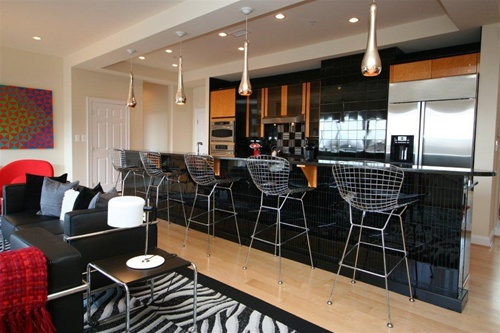Interior design can be a daunting exercise. There is so much work involved in the process that one can easily succumb to the pressure. From planning one’s preferred motif to hunting the most cost-efficient and quality-driven suppliers, the amount of responsibility is nothing less than a handful.
It goes without saying, though, that designing one’s home is as fun and exciting as it is financially and physically demanding. Which then leads us to the ultimate question: when it comes to decorating one’s abode from scratch, is it better to hire an interior designer, or go with the DIY approach?
To answer the aforementioned query, let us enumerate the merits of each practice.

Hiring a Professional Interior Designer
- Time efficient. Unless you do not belong to the working demographic, this should be something to consider in high regard. Working with a professional interior designer allows you to cater to your other responsibilities- primarily those that are career related- and still have the assurance that your project gets the kind of attention and commitment it requires.
- Centralized responsibility. Even if you opt for the DIY approach, there will come a time when you will require troubleshooting methods that can only be enacted by specific subcontractors. This leads to dispersed responsibilities which could hamper your project’s progress. Working with a professional designer eliminates this concern since you have one point person who takes care of all tasks – anticipated or otherwise.
- Energy efficient. Professional interior designers know the trade secrets for creating an energy efficient household.
- Market value. Professional work breeds topnotch home quality, which then equates to a residential property’s augmented market value.
- Aesthetics and functionality. These designers are equipped with the aptitude to combine design with practicality.
- Workable action plan. Working with a career-driven designer means that there will be mutual dedication to an action plan that is mutually beneficial.
- Stress free. You can sit back and relax while having someone else complete an excellent home design job for you.
Do It Yourself
- Full budget control. Some professional designers tend to ask for more than what a client can invest. With the DIY approach, you’ll have total control over how much to shell out.
- Timetable command. DIY allows you to either fast track or slow down your project, depending on your time and budget allowance.
- Creative control. There are instances when professional designers tend to monopolize the creative aspect of a home design project, even if their ideas oppose that of their clients’. With the DIY approach, it is all about what you want and how you want it.
- Easy plan adjustment. If you suddenly get a change of heart, in relation to your choice of couch or other design specifics for instance, you can easily scrape the older plan and go along with the new one, without having to worry about a third party’s choices and priorities.
- Choice of suppliers. DIY gives you the privilege to find suppliers who you can haggle with. Oftentimes, professional designers have their own list of suppliers which may not always provide the best deals or bargains.
- Recycling of old furniture. One common source of conflict between professional designers and their clients is when the latter decide to keep old furniture pieces that do not complement the current project’s theme or motif as per the formers’ aesthetic standards. DIY does not give you this problem.
- Project flexibility. Doing your own home’s design allows you to complete your project at your own phase, and under your own set of standards. Anytime you wish to alter your design blueprint, you can easily do so without having to consult with another person.
Therese Shaw is an occasional interior designer. She delights in doing projects hands-on and with great meticulousness. She also writes for Instylemodern.com, a supplier of tulip tables and chairs.

